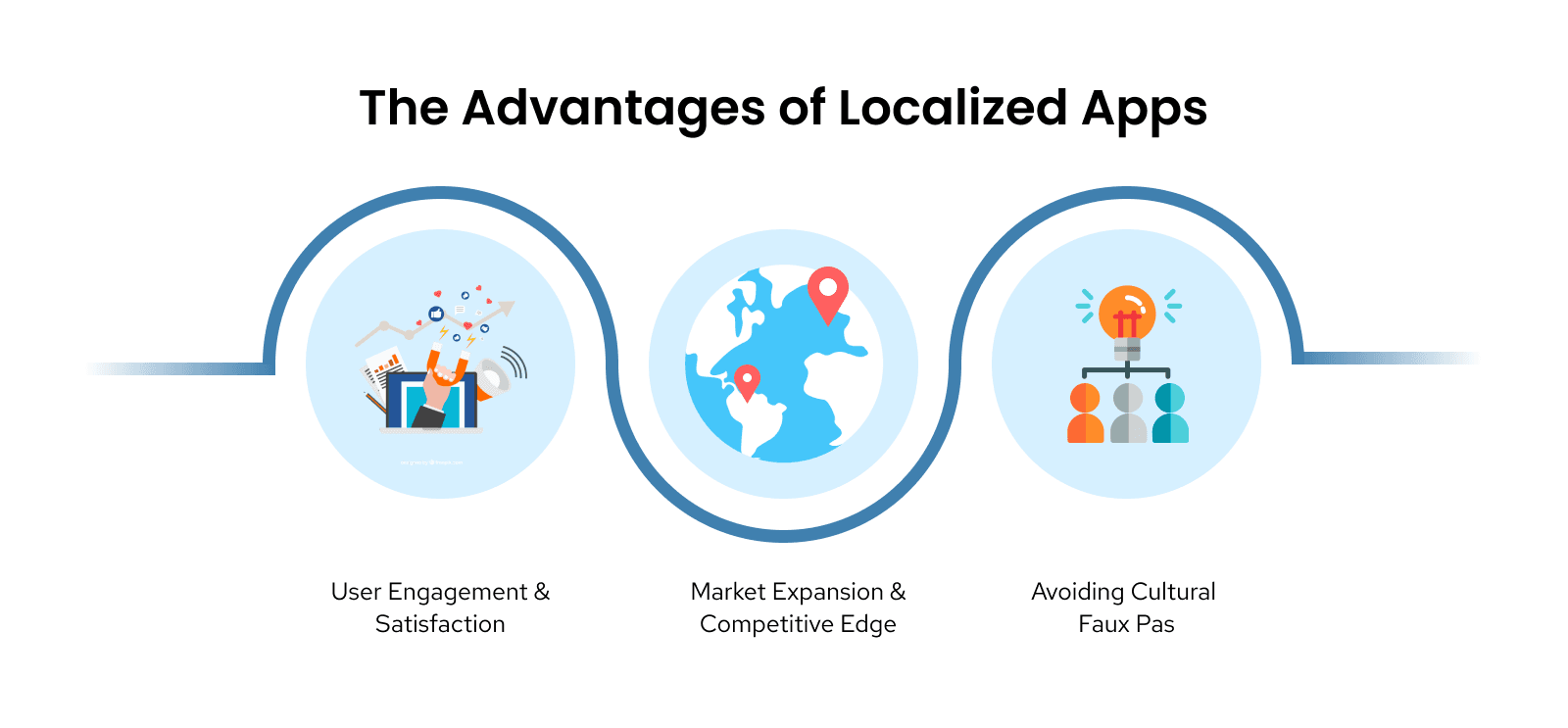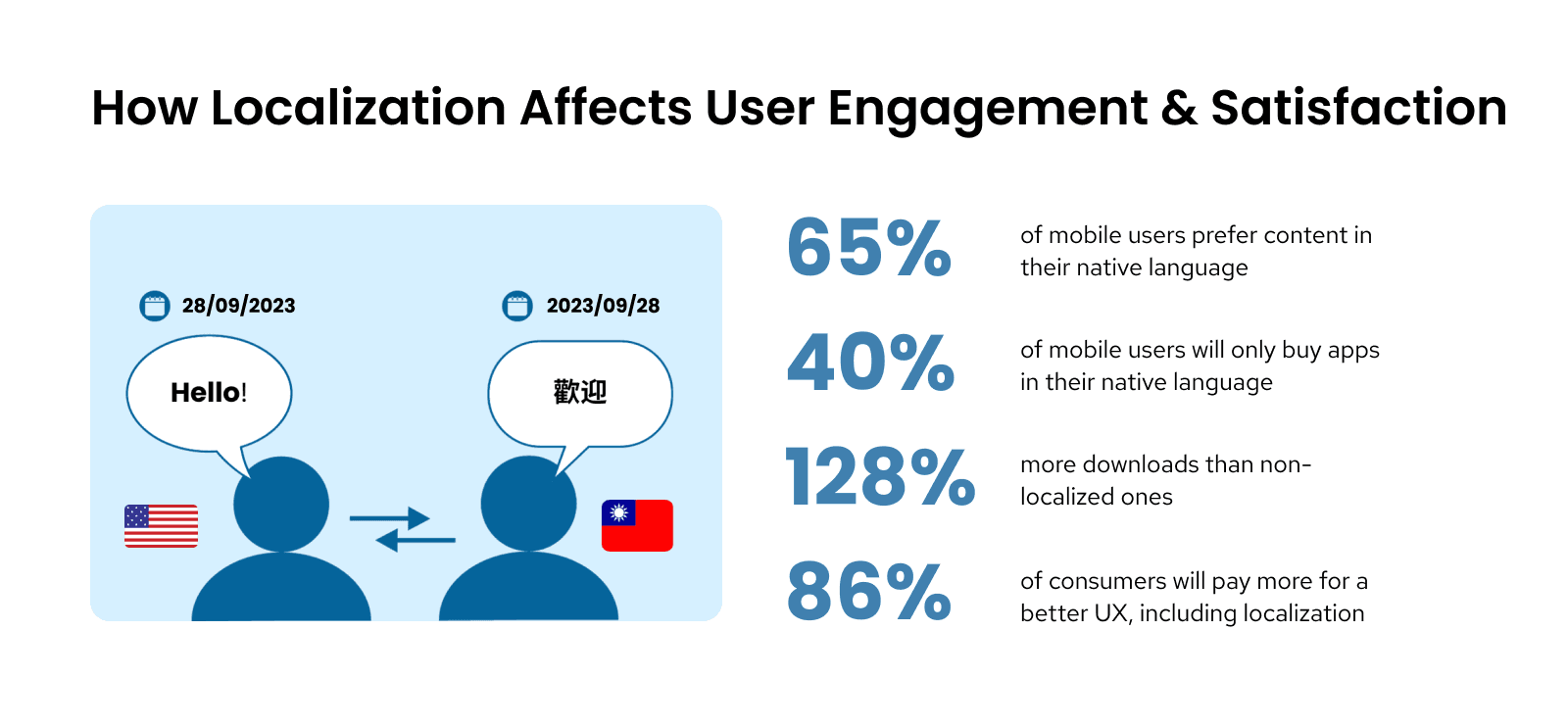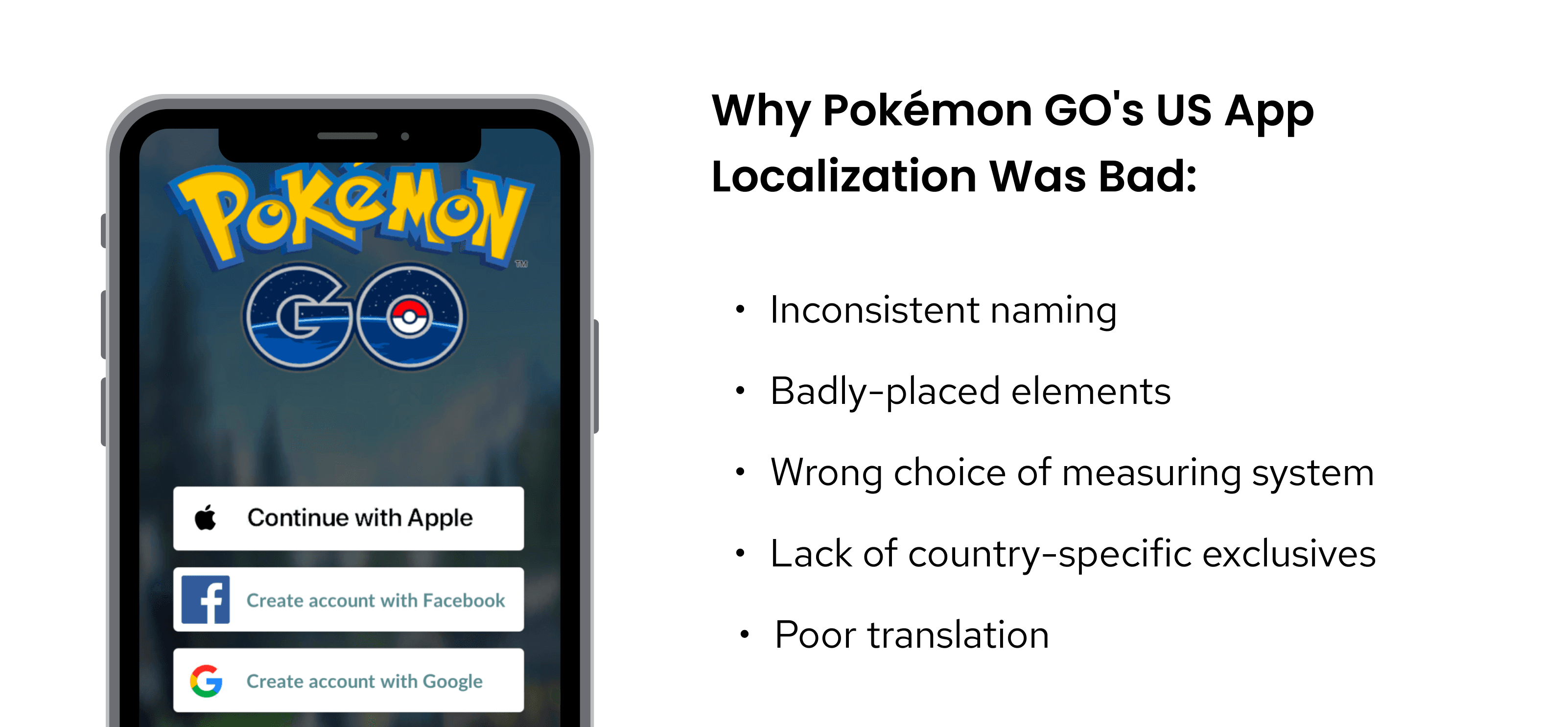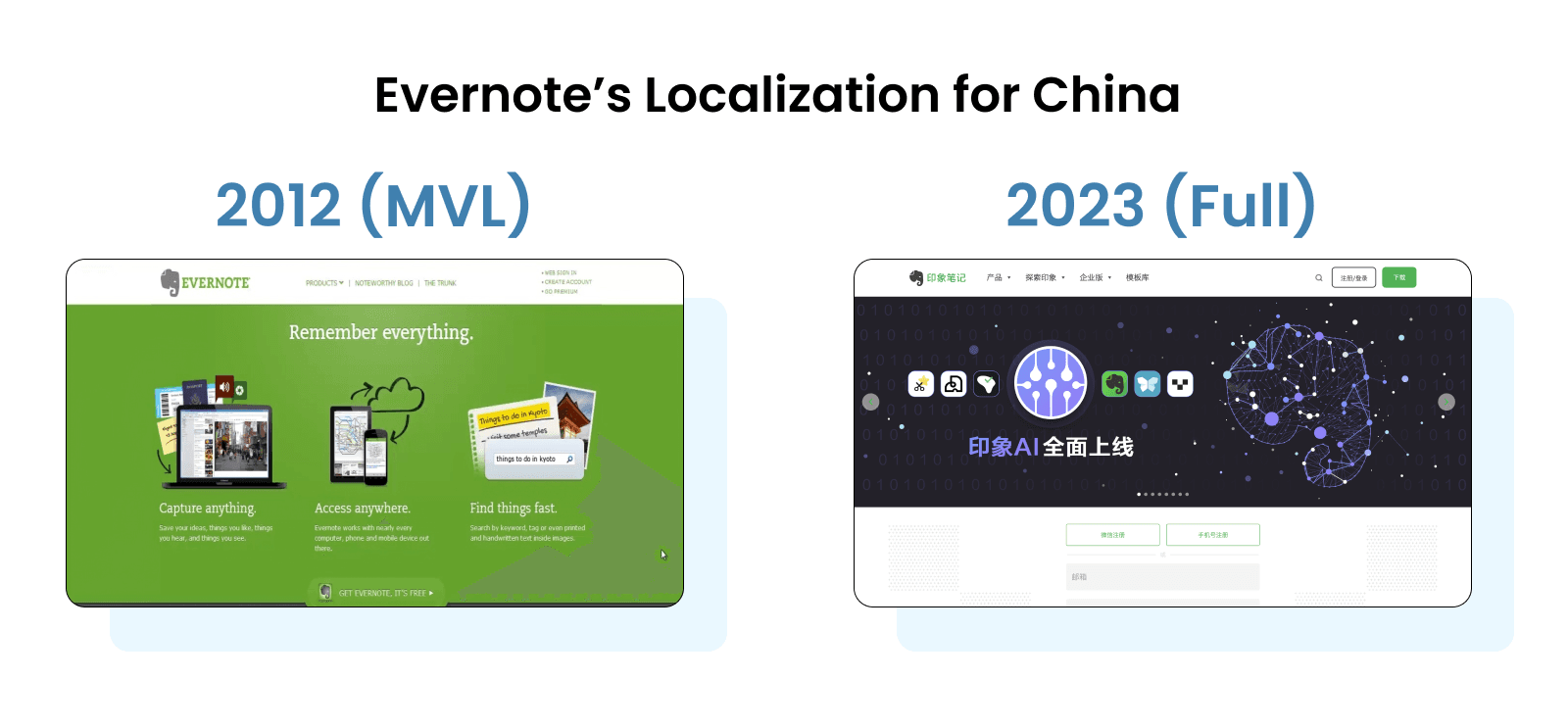When Localization Goes Wrong (And How to Avoid It)

Gianmarco Caprio
Writer and editor at Phase with a fondness for photography, typography, design and travel.
In an era of unprecedented global connectivity, the demand for app localization has grown exponentially. It's not merely a trend, but an essential strategy that can propel your app to success… or to its demise. Imagine your app expanding its reach across borders: bridging cultural gaps and resonating with users worldwide. That’s what (good) app localization is all about.
We will uncover the realm of UX design in a globalized app market and unlock the secrets to overcoming localization challenges. That way, you can ensure that your app doesn't just function, but thrives in diverse linguistic and cultural landscapes.
The Significance of Localization in UX Design
Statistics published by My Language Connection, a translation services company, consistently underscore the impact of localization on user engagement and satisfaction. They conclude that 65% of mobile users prefer content in their native language, while 40% will only buy apps in their mother tongue. Moreover, localized apps had 128% (!) more downloads than non-localized ones.

It is proven that users exhibit higher satisfaction levels when they can interact with an app that’s both in their native language and aligns with their cultural norms and expectations: according to the same statistics mentioned earlier, up to 86% of consumers are willing to pay a higher price for a better mobile experience which includes localized apps.
Localization is one of the factors determining a product’s market expansion and competitive edge over their direct competitors. It should come as no surprise that well-localized apps will determine an increase in the amount of people that will use it, something that makes app localization not just a mere checkbox on a to-do list, but rather a strategic imperative for anyone aiming to extend their reach. By adapting your app to various languages and cultures, you can cultivate a global user base that feels valued and heard.

Airbnb is a great example of a product that’s been localized effectively not only for all the languages in which it is offered, but also to the different countries that use the same language. The controversial short-term rental service - known for upending the real estate market and creating the Lottie animation format - offers highly-personalized experiences for all the markets in which they’re present. This has resulted in Airbnb becoming a global leader in their niche - with user satisfaction levels consistently high across different markets and throughout the years.
App Localization Hits and Misses
We're going to take a deep dive into one localization miss and one hit. Real-world examples of both good and bad app localization will offer an opportunity to analyze the shortcomings (and their solutions) in the miss, as well as highlighting the key points of the hit.
Flawed localization comes in many forms, but we'll start with the obvious one: text. Word usage, text length, height of characters and direction of writing in different writing systems are some of the most common problems.

Bad translations are commonplace, and we get to see them often in our daily lives. Other issues that compromise localization relate to a lack of understanding of cultural context, which also includes issues like the use of wrong measurement units.
Consider the cautionary tales of apps that fell short in their localization efforts. From awkward translations to culturally insensitive content, these examples serve as stark reminders of the potential consequences of neglecting localization. Aside from frustrating users, poorly-localized apps also lead to misunderstandings, offense, as well as loss of credibility by the company that developed or released the app.
App Localization Miss: Pokémon GO’s US App
For our first app localization miss, we’ll analyze one of the most notable examples in recent memory: Pokémon GO. Despite its wild popularity, it had a super rocky launch in one of the largest markets in the world: the United States.
The case of this still-popular game app is one of the most exemplary to examine and discuss due to the many wrong’s that lead to this localization fail of epic proportions.

Pokémon GO became a worldwide phenomenon in a very short time, and so it was adapted for many markets rushedly. The game app’s original version wasn’t developed in English, and an ineffective localization led to many issues for users. Among them, the most serious were:
- The inconsistent naming of Pokémons;
- The location-based elements being placed in irrelevant or insensitive locations, such as a PokéStop placed in a Holocaust Memorial;
- The metric system being used instead of imperial units;
- Some exclusives available elsewhere are not being offered in the US leading to user frustration.
All those mistakes could have been easily avoided if a proper localization effort was undertaken by Niantic, the app’s developer. Needless to say, the US isn’t exactly a mysterious country that no one knows nothing about and whose cultural norms people aren’t familiar with - quite the opposite. This makes this bad localization even more surprising and that is the reason why it was picked as an exemplary bad English-language localization.
App Localization Hit: Dailyhunt’s Multi-Language India App
Continuing beyond English, we'll explore a country where localization efforts are more difficult than in others: India. That’s because India is not an homogenous country and many cultures and languages coexist side-by-side.
While the majority of the country’s population speaks Hindi, there are other languages spoken in this diverse country that aren’t any less relevant - and certainly no less Indian.
Through the case study of the news aggregator app Dailyhunt (formerly known as Newshunt), we will unravel the challenges encountered and the measures taken to achieve successful localization in this vast and diverse country.
The project, started in Bangalore in 2010, provides news in 14 out of the 23 official Indian languages, hitting the big ones like Hindi, English, and Bengali, and some smaller ones like Marathi and Tamil.

Obviously, with the parent company of Dailyhunt being Indian itself, they knew they had no choice but to adapt their app to at least some of the most popular of India’s many languages, if they wanted the speakers of those idioms to use their product on a daily basis as their main news source. And that’s exactly what they did: a product that is flawlessly adapted into many languages that use different writing systems, which works well in all its regional declinations.
The app is currently one of the main news aggregation apps used by Indians from all linguistic backgrounds, a testimony to the fact that a good job was done at effectively localizing their product for all major local Indian versions in which it is offered.
Navigating the Maze: The (Many) Challenges of App Localization
App localization is not without its challenges. It’s a complex process that transcends translation. Developers and designers must grapple with complex issues like language nuances, cultural adaptation, and varying design preferences across regions.
It is important to note that there are two different approaches to app localization: the first is minimum viable localization (MVL), and the second is full app localization. For instance, the popular note-taking product Evernote was first introduced as a MVL product for China back in 2012, with a fully localized experience released in the years after.

Integrating multiple languages seamlessly into an app's interface can be technically demanding, and the time and resource constraints associated with localization can pose significant hurdles such as incurring in additional costs. Though these are often well worth it, as the returns often exceed the costs through access to additional markets.
Failure to address these challenges adequately can result in localization disasters that tarnish user experience and harm your brand's reputation.
Guiding the Journey to Localization Success
There are many steps involved in a localization effort, all of which are equally important. When tackling app localization, nothing should be left to chance. To close off this article, we’ll look at the main four steps that will guide your journey to localization success.

1. Plan Ahead
To ensure a smooth localization process, it's essential to plan ahead: start thinking about localization early in the app development cycle. The earlier, the better. To thrive in a globalized market, developers and designers must prioritize user experience in all regions: bridging cultural gaps and embracing the potential of localization is essential to reach a more diverse audience.
2. Continuous Localization
Another essential step is continuous localization. That way, you can ensure that your product stays updated for all the different languages and regions where it is available, maintaining a constant level of quality across all markets. The question is, of course, how can one achieve effective continued localization over time? The answer is: automated content synchronization.
3. Automated Content Synchronization
Automated content synchronization is a process where content, such as text, images, or other media, is automatically updated and kept consistent across different versions (or localizations) of an application. This approach helps streamline the management of content and reduce the risk of inconsistencies, making it much easier to maintain and update multiple versions of an app.
4. Using the Right Tools
The selection of appropriate and up-to-date localization tools, along with establishing an efficient workflow for translation and cultural adaptation, are key. Without them, the likelihood of below-par localizations increases and therefore should not be understated.
Ultimately, we can conclude that successful app localization is not something to be taken lightly. Contrary to what might be thought at first, localization is not a one-time endeavor, but an ongoing commitment to providing a satisfying user experience across diverse markets and improving it over time.
. . .

Start Prototyping
Get Started with Our Free, Web-Based Platform.
© Phase Software GmbH 2025